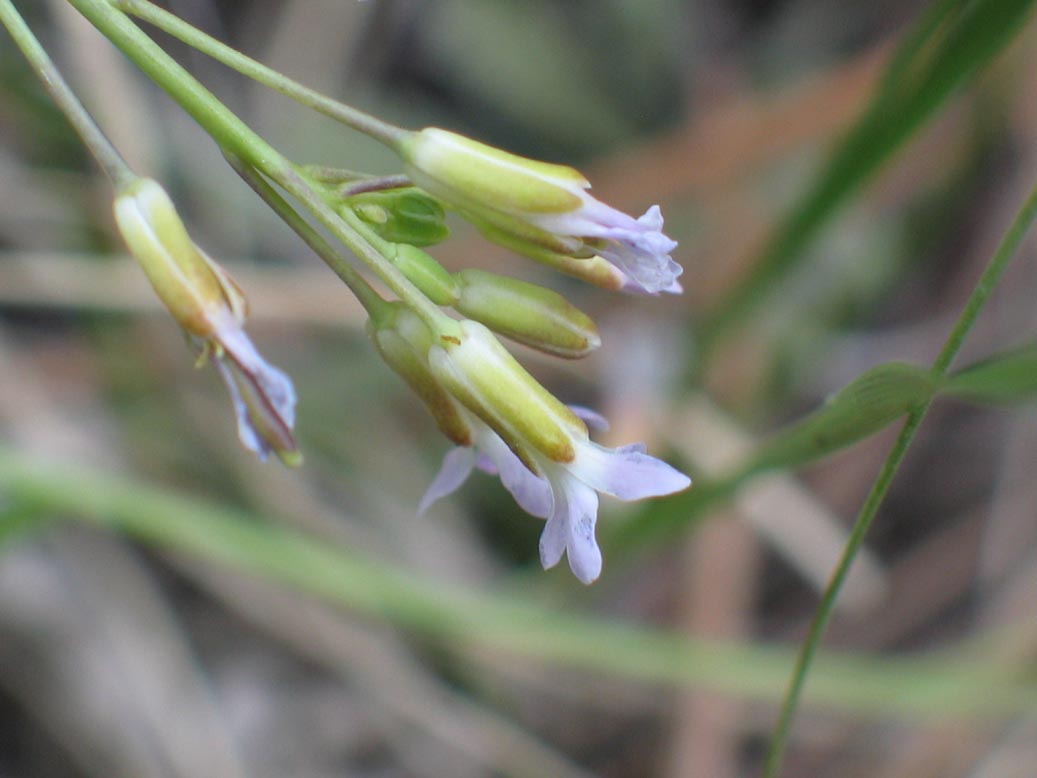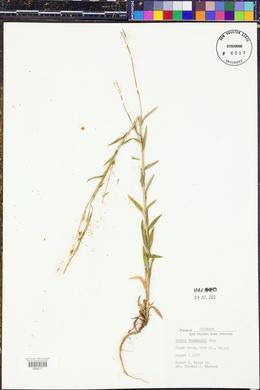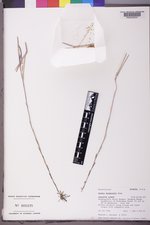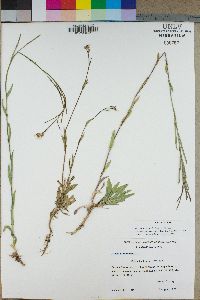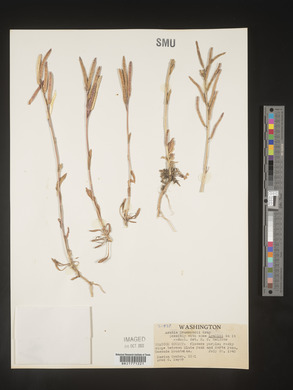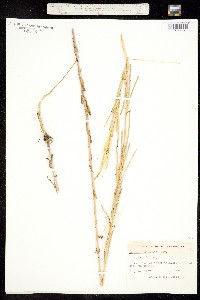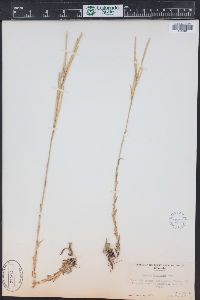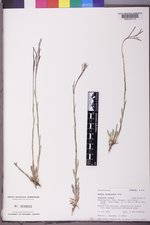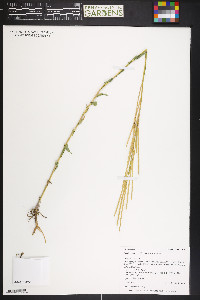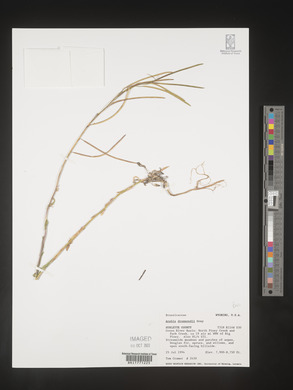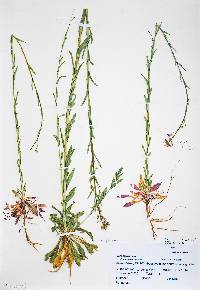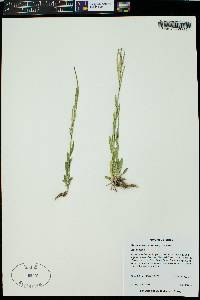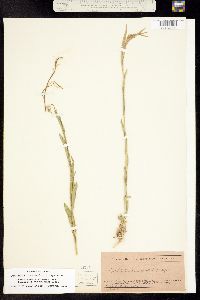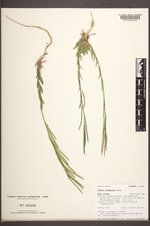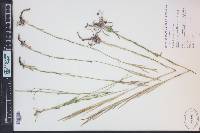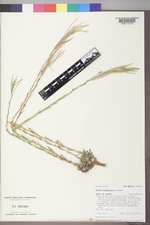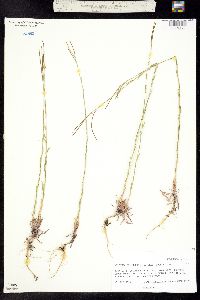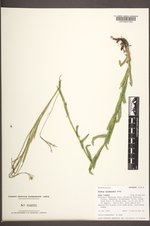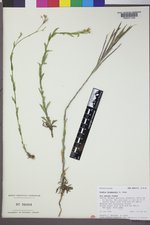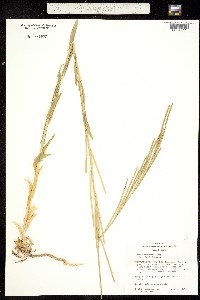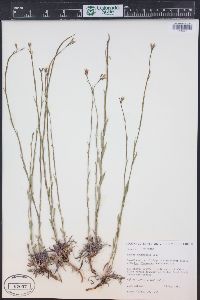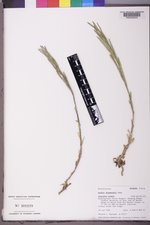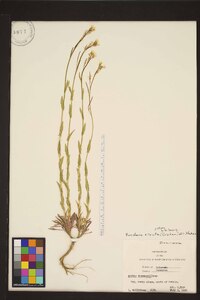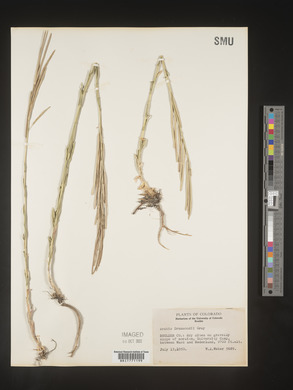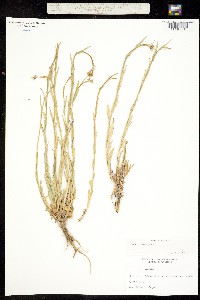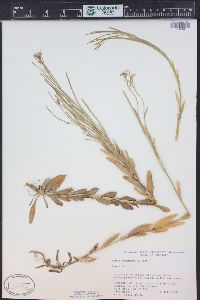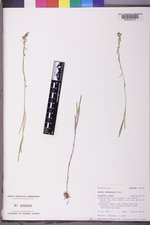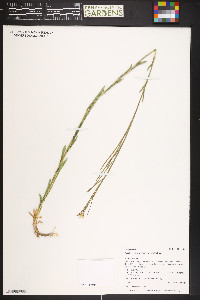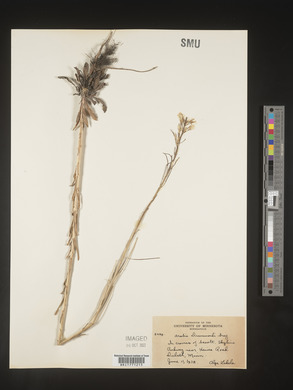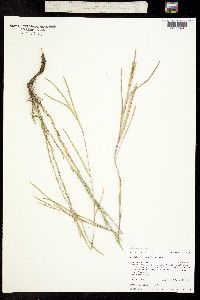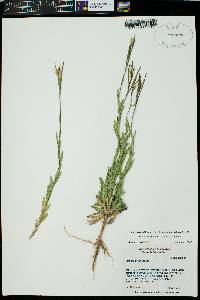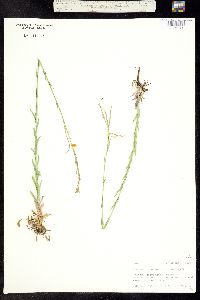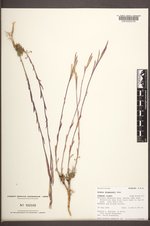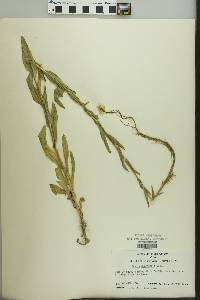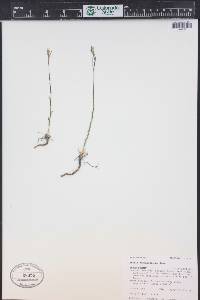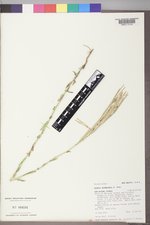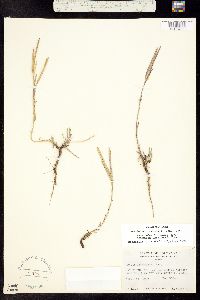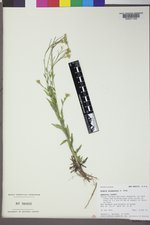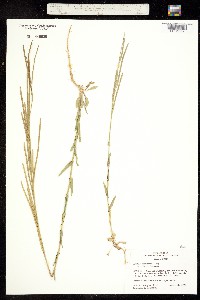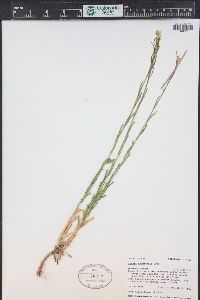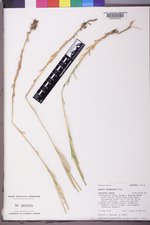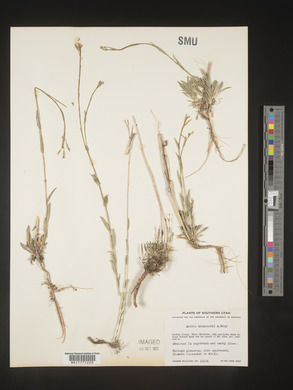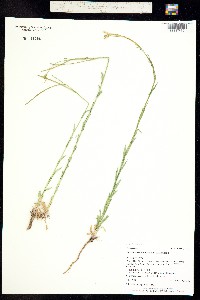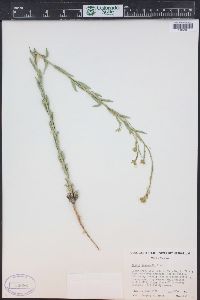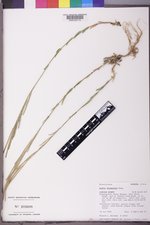Boechera stricta
|
|
|
|
Family: Brassicaceae
Canadian Rockcress, more...Drummond's rockcress, Drummond rockcress
[Arabis albertina Greene, moreArabis connexa Greene, Arabis drummondii A. Gray, Arabis drummondii var. connexa (Greene) Fern., Arabis drummondii var. drummondii , Arabis drummondii var. oreophila , Arabis drummondii var. oxphylla , Arabis drummondii var. oxyphylla (Greene) M. Hopkins, Arabis oxyphylla Greene, Arabis philonipha , Boechera angustifolia (Nutt.) Dorn, Boechera drummondii (A. Gray) A.& D. Löve, Erysimum drummondii (A. Gray) Kuntze, Streptanthus angustifolius , Turritis drummondii (A. Gray) Lunell, Turritis stricta] |
Biennials or perennials; usually short-lived; sexual; caudex usually not woody. Stems usually 1-4 per caudex branch, usually arising from center of rosette near ground surface, rarely arising laterally proximal to sterile shoots, 1.5-8(-10.2) dm, glabrous or sparsely pubescent proximally, trichomes sessile, usually 2-rayed, rarely simple, 0.3-0.7 mm, glabrous distally. Basal leaves: blade oblanceolate, 1.5-8(-14) mm wide, margins usually entire, rarely dentate, ciliate, trichomes (sessile, usually 2-rayed, rarely simple ones at petiole base), surfaces usually pubescent, sometimes glabrous, trichomes sessile, 2-rayed (malpighiaceous), 0.3-0.7 mm. Cauline leaves: 6-52, concealing stem proximally; blade auricles 0.5-3 mm, surfaces of distalmost leaves glabrous. Racemes 8-35(-80)-flowered, usually unbranched. Fruiting pedicels erect, straight, 5-18 (-25) mm, glabrous. Flowers erect at anthesis; sepals glabrous; petals white (usually aging pale lavender), (5-)7-11 × 1.5-2.7 mm, glabrous; pollen ellipsoid. Fruits erect, appressed to rachis, not secund, straight, edges parallel, 4-9(-10.2) cm × 1.5-3.5 mm; valves glabrous; ovules 110-216 per ovary; style 0.05-0.3 mm. Seeds biseriate, 1.3-2.2 × 1-1.6 mm; wing lateral and distal, 0.3-0.8 mm wide. 2n = 14. Flowering May-Aug. Rocky slopes and gravelly soil in sagebrush and mountain shrub communities, open conifer and hardwood forests, alpine meadows; 700-3900 m; Alta., B.C., N.W.T., Que., Sask., Yukon; Alaska, Ariz., Calif., Colo., Idaho, Iowa, Maine, Mass., Mich., Minn., Mont., Nev., N.H., N.Mex., N.Dak., Ohio, Oreg., R.I., Utah, Vt., Wash., Wis., Wyo. Arabis drummondii is the correct name for this species in that genus; the epithet stricta has priority in Boechera. This very distinctive species is easily recognized by having basal leaves with branched trichomes, all sessile and 2-rayed (malpighiaceous). It is also the most promiscuous, having formed apomictic hybrids with at least 15 other species of Boechera.
Biennial herb 30 cm - 1 m tall Stem: upright, sometimes with a waxy coating (glaucous). Leaves: alternate, stalkless (upper leaves), 2 - 8 cm long, reverse lance-shaped to lance-shaped to narrowly oblong, tip pointed, sometimes bearing a few teeth, sometimes slightly hairy. Flowers: in short clusters, white or yellowish white, 5 - 9 mm long. Petals four. Stamens six. Fruit: a narrow pod, upright, straight, 4 - 7 cm long, 1.5 - 2.5 mm wide, on a 10 - 15 mm long stalk, flat. Seeds in two rows in each chamber. Similar species: The similar Boechera laevigata differs by having pods that are very curved. Flowering: May to July Habitat and ecology: Very rare in the Chicago Region, possibly extirpated. Grows on gravelly soil, often along riverbanks. Occurence in the Chicago region: native Etymology: Boechera refers to the Danish botanist, Tyge Bocher. Drummondii refers to Thomas Drummond, a 19th century Scottish naturalist. Author: The Morton Arboretum FNA 2010, Allred and Ivey 2012 Duration: Perennial Nativity: Native Lifeform: Forb/Herb General: Biennials to short-lived perennial herbs, 15-100 cm tall, from a usually non-woody branched caudex; stems usually 1-4 per caudex branch, arising from the center of a rosette of leaves near the ground surface (rarely arising laterally from the base of sterile shoots); stems glabrous or sparsely pubescent near the base; hairs, if present, are sessile and 2-branched, or rarely unbranched. Leaves: Basal leaves petiolate, clustered in distinct rosettes; stem leaves alternate, sessile; basal blades oblanceolate, 1-14 mm wide, with entire margins (rarely dentate), surfaces usually pubescent with sessile, 2-rayed hairs; stem leaves numerous, concealing the stem near the base; stem blades clasping the stem with auricles 0.5-3 mm long; uppermost stem leaves glabrous. Flowers: White, in terminal racemes of 8-80 flowers, on 0.5-2 cm pedicels which are erect in flower and in fruit; sepals 4, glabrous; petals 4, in a cross formation, white (usually aging pale lavender), 5-11 mm long and 2 mm wide. Fruits: Capsules linear, 4-10 cm long and 1.5-3.5 mm wide, erect, usually appressed to the center stalk of the inflorescence, glabrous; seeds 1-3 mm long, winged, in 2 rows per locule. Ecology: Found on rocky slopes and gravelly soils, in sagebrush and mountain shrub communities, open conifer and hardwood forests, and alpine meadows, from 2,500-13,000 ft (762-3962 m); flowers May-August. Distribution: Throughout western N. Amer. from AK to the Northwest Territories, south through WA and MT to CA, AZ, and NM; also in the upper midwest and New England. Notes: Because of hybridization, polyploidy, and self-fertilization, Boechera is an extremely problematic group. There have been several re-organizations of this group over the years (including splitting it out from the genus Arabis). For simplicity it is better to use a recent treatment to identify your plants; this description is based on the Flora of North America treatment (2010) and the key divisions in the Flora Neomexicana (Allred and Ivey 2012). Arabis drummondii is the proper synonym for this species when it was placed within the genus Arabis. The primary distinguishing characteristic of this species is its pubescence, which is 2-branched and sessile. Other species of Boechera have simple, unbranched hairs (e.g. B. fendleri) or, more commonly, have stellate hairs on stalks. Also note the upward-pointing fruits (most other species have widely pendulous fruits); hairless sepals; nearly hairless stems; and white flowers (many other species have lavender flowers). B. stricta is the most promiscuous of the Boechera spp, having formed apomictic hybrids with at least 15 other species in the genus. Ethnobotany: A poultice of fresh or dried plant was applied to sores, and a decoction of the plant taken was taken for pains in the lumbar region, as a diuretic to treat kidney and bladder troubles, and to treat gonorrhea. Etymology: Boechera is named after Tyge Wittrock Boecher (1909-1983), a Danish botanist, ecologist, and plant geographer; stricta means having erect inflorescence branches. Editor: AHazelton 2017 Erect biennial 3-9 dm, glabrous or with a few 2-pronged hairs below, often glaucous; cauline lvs sessile, lanceolate to narrowly oblong, 2-8 cm, acute, entire or with a few teeth, auriculate at base or the uppermost acute; pet 5-9 mm; mature pedicels erect, 10-15 mm; frs straight, erect, flat, 4-7 cm נ1.5-2.5 mm, the seeds in 2 rows; 2n=14, 20. Various habitats; Lab. and Nf. to B.C., s. to Del., O., Io., and Ariz. May-Aug. Gleason, Henry A. & Cronquist, Arthur J. 1991. Manual of vascular plants of northeastern United States and adjacent Canada. lxxv + 910 pp. ©The New York Botanical Garden. All rights reserved. Used by permission. From Flora of Indiana (1940) by Charles C. Deam I found two colonies of this species in gravelly soil on the slope of the north bank of the St. Joseph River, one about a half mile and one a mile and a half southwest of Bristol. Nieuwland's report for it from St. Joseph County is the only other record. ...... Indiana Coefficient of Conservatism: C = 10 Wetland Indicator Status: FACU |

